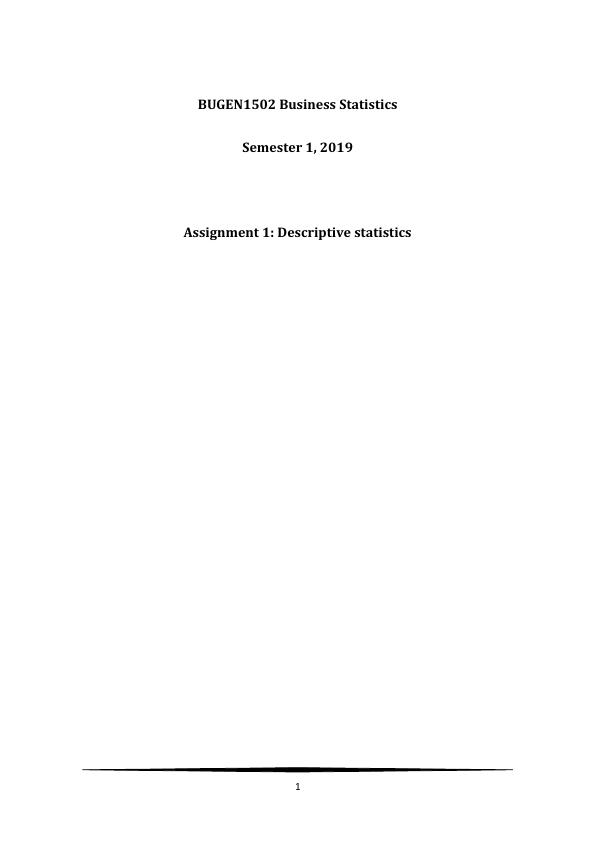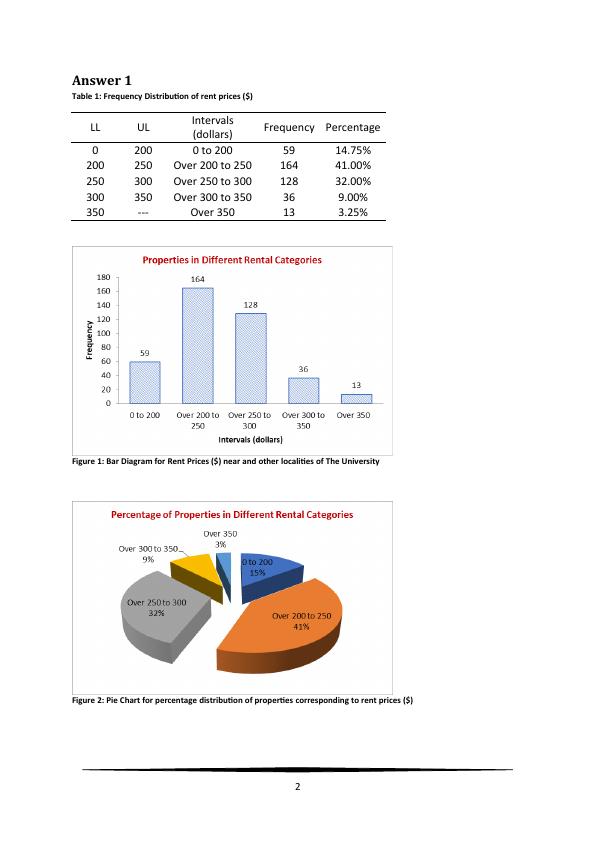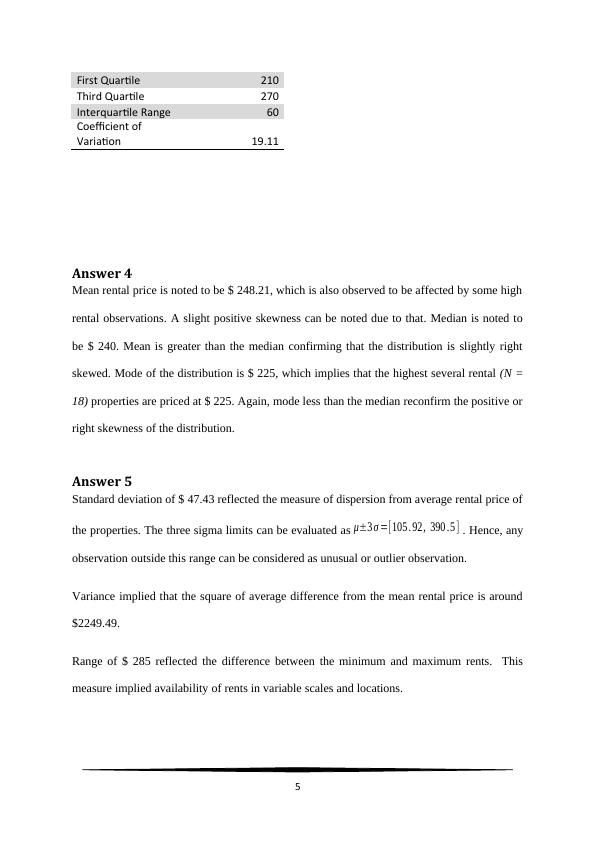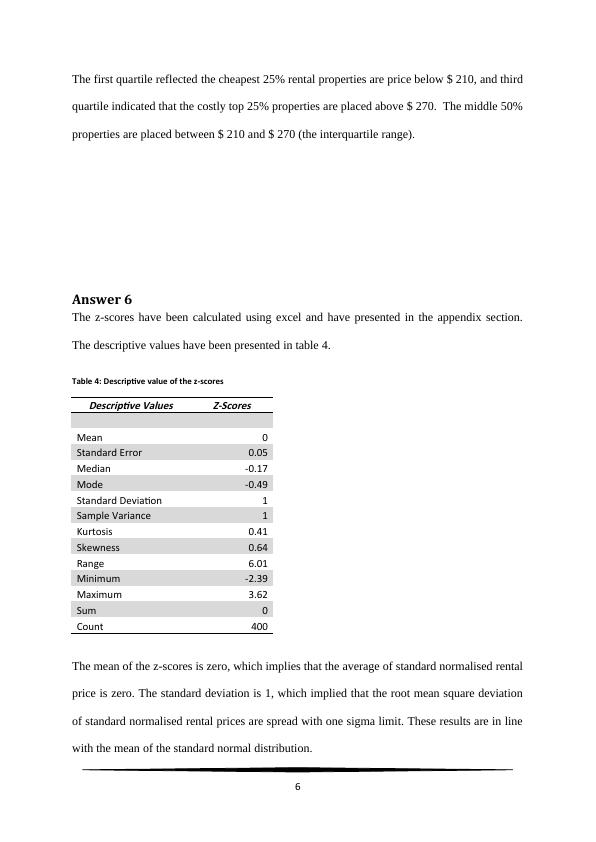Descriptive Statistics for Rental Properties
The assignment involves analyzing rental costs of one-bedroom accommodations near a university campus and presenting the findings in a Word document or PDF.
21 Pages2589 Words26 Views
Added on 2023-01-16
About This Document
This document provides a comprehensive analysis of rental properties, focusing on descriptive statistics such as mean, median, mode, standard deviation, and variance. It includes frequency distribution tables and histograms for different price ranges. The document also compares rental properties near the university campus and in other areas, highlighting differences in central tendencies and variations.
Descriptive Statistics for Rental Properties
The assignment involves analyzing rental costs of one-bedroom accommodations near a university campus and presenting the findings in a Word document or PDF.
Added on 2023-01-16
ShareRelated Documents
End of preview
Want to access all the pages? Upload your documents or become a member.
BUGEN1502 | Statistical Charts
|6
|564
|15
Case Study Of Business Statistics Report
|9
|575
|15
HI6007: Statistics For Business Decisions
|7
|944
|488
Group Assignment – Statistics
|11
|1454
|90
Desklib - Online Library for Study Material with Solved Assignments, Essays, Dissertations
|6
|948
|347
Quantitative Analysis for Business
|9
|1616
|301






